After returning from our Jungle Trip we spent one more day in Quito, to do laundry and re-organize our stuff again. Sunday morning we left our German Hostel and rode south to Banos (sorry, can’t figure out how to get the ~on the n, without changing the whole keypad!!). This famous little town is the gateway to Amazonia and is at the foot of the Volcano Tungurahua. Also famous for the “Virgin of the holy water”, who attracts a lot of Pilgrims, too. The people in this town live on the edge, since they had to be evacuated several times, because since 1999 the Volcano became pretty active again.
We spent 2 days in a lovely Hostel (Chimenea) there and did some hiking and ultimately trying to catch a glimpse of the famous Volcano, but it wasn’t willing to show itself, but hit behind clouds the whole time. As always lot of interesting people in the Hostel. Once we had dinner with a couple (she was from Korea, he was from Wales) and exchanged lots of traveling tips and anecdotes. We even met a fellow Canadian from Thamesford!!
Wednesday we moved on to Cuenca, which is further south and at 2530m altitude. It is the fourth biggest city in Ecuador and a UNESCO World Heritage Site. The ride there was spectacular. Up and down the mountains through little villages, past hard working indigenous men and women, who were working their fields (by hand!) or tending their animals (herds of cows, sheep, lamas…) all dressed in their traditional clothes with the famous black round hat. The landscape changed from luscious green pasture to dry grass several times. Once we were stopped by police and they inspected not just our papers, but we had to open virtually everything right down to my cosmetic bag and soap box. I think they were looking for drugs! Of course we had nothing to hide!!
In good (riding) spirits we arrived in Cuenca at our selected Hostel (Yakumama), only to find out that there was no more private rooms, only a dorm room with 6 people. There was a festival and a holiday coming up, so –no choice- but to take a bunk bed for the 2 of us for 2 nights. It wasn’t too bad for sleeping. We were together with a lady from Germany, 2 guys, one from Bolivia, one from Guayaquil (Ecuador) and a third one later from Switzerland…very international!
Cuenca is called the “Athens” of Ecuador, has lots of cobblestoned narrow streets and 2-storied colonial houses with little “Tiendas”. The river Tomebamba separates the city into 2 halves with the colonial centre in the north and the new town with University in the south. We explored the city, met with our Ecuadorian friend Mario and his brother Jorge again, who were staying in town as well. We visited the remains of an Inka town called Pumapungo and also the Cultural Museum. And like in every city there’s always the “plaza major” with the Cathedral and various other churches around to see. Last night we went with Mario and Jorge and enjoyed a free concert of the Cuenca symphonic orchestra in one of the city’s park.
So on Friday we rode to Vilcabamba, a small town south of Loja in southern Ecuador, again we passed beautiful small villages in the mountains with indigenous people at work. It’s too bad that they do not like you to take pictures and by the time we thought of our go-pro it was almost too late. Here’s a bit of info about this town.
Are these aliases accurate? It’s hard to say. Scientists from all over the world have studied the people of Vilcabamba Ecuador for decades, since their longevity first gained international attention in the 1970’s. Many of “The Old Ones,” as the town’s elders are called, declared themselves to be over 100 years old, with some even claiming to have reached the age of 120.Hidden in the Andean slopes of Ecuador lies the small village of Vilcabamba, nicknamed the “Valley of Longevity.” Originally a haven where Incan rulers retreated for rest and rejuvenation, it’s also been called the “Playground of the Incas.” Some people, bewildered by the mystery behind the long lives of its residents, have even called it “Shangri La.”
Years of research have been inconclusive as to the reason for the long lives of the people of Vilcabamba. In fact, some fallacies have even been revealed, which indicate that the people might not even be as old as they claim to be (and with no birth certificates or other written records, the truth is difficult to ascertain).
However, one fact is most certainly true. While the people of Vilcabamba may not live LONGER than others around the world, they are most certainly living BETTER. Instances of diabetes, heart disease, and other serious illnesses are drastically lower, if not non-existent. While there’s much speculation about the reasons for the health of the residents of Vilcabamba, these are the most commonly cited.
- They enjoy a pleasantly mild climate year-round.
Vilcabamba Ecuador lies just south of the Equator. But, at an elevation averaging around 1500 metres, its temperature is quite mild.
There is a wet season from October to May and a dry season, which runs from June to September. However, rivers that run into the valley from the surrounding mountains keep it green during those months as well.
The air in Vilcabamba is clean and pure. There’s one cell phone tower, so electromagnetic pollution is kept to a minimum. There are also no airplanes that fly over the peaceful valley, eliminating any chemtrail residue from the area.
- The water is clean and packed with minerals.
Of all the factors contributing to the well-being of the residents of Vilcabamba, few have been studied as much as its water supply, which scientists have declared to be the purest and healthiest in the world. Here’s a little hydrology lesson that explains why.
Vilcabamba is surrounded by the Podocarpus National Park, which is made up of untouched rainforests and claims to have microorganisms that predate the Ice Age. Among the park’s highest peaks lies a tundra with 14 lakes which hold water that melted from uncontaminated glacier ice. This “glacial milk,” as it’s called, contains metallic colloidal minerals.
During the rainy season, these lakes overflow and flood the tundra. The waters are filtered by the lush, untouched grasses and vegetation that make up the tundra. They then flow into pools and hundreds of waterfalls that cascade down from the mountains, giving the water a beneficially high negative ion count.
Once it reaches the valley, the water is collected and consumed by the residents of Vilcabamba. No preservatives or other chemicals are added. It doesn’t get any more natural than that.
- They eat fresh, organic fruits and vegetables and not much else.
We mentioned the rivers that flow into Vilcabamba, providing water even for the dry season. The year-round availability of pure water allows the town’s growing season to span pretty much the entire year. When leaving the tundra, the water also carries with it humus, an organic matter than serves as nutrients for the plants that are grown in the village. As a result, the area’s produce has some of the highest antioxidant content in the world.
Keep in mind that Vilcabamba was almost completely unknown to the world until a few decades ago. In fact, until the 1960’s, there wasn’t even a road that led into the valley. As a result, the area has been protected from “civilization” and a lot of its vices. Chemical additives have never been a part of the area’s farming. And, until recently, no packaged or prepared foods could be found on its grocery store shelves.
Residents of Vilcabamba have traditionally enjoyed a diet of fresh produce, whole grains, seeds, and nuts. They eat little fat and almost no animal products.
- They lead active, hard-working lifestyles.
The people of Vilcabamba don’t exercise. They don’t have to. Almost all of the area’s residents are farmers. And the often rugged terrain requires them to hike up the slopes to pick fruits and till the soil on sloping hillsides.
They lead simple lives and have very little stress. The elderly are treated with great respect, and it’s considered an honor to have reached old age.
When you lay it all out there, it’s a simple formula really. Keep things natural and simple. Put good in, get good out. Work hard. Play hard. And respect your elders. These are the things that have drawn decades of expats to Vilcabamba. But unfortunately many have brought their old habits with them.
Stores now stock many packaged and processed foods. Drug and alcohol abuse are at an all time high among natives, and obesity has found its way onto the town’s short list of medical concerns. The locals welcome foreigners and even some of their advancements, but many hope more of them will start to help keep this little-known paradise closer to the way they found it.
Today Vilcabamba is also a popular gringo or foreigner destination. It used to be that most foreigners were backpackers passing through on their way to Peru and only a few would end up of staying as long term residents. But as the years have gone by, more and more foreigners are finding it a great place to retire or settle down. As well you see old and new hippies all over the little town who are looking for a “Shangri La”.
It really looks like the “Gringos” are taking over and that just does not feel right. It is sad to see that the town, in my opinion has lost its Ecuadorian identity. We are staying over the weekend at the ‘Hosteria Paraiso”, where we first got a room only for one night and decided to camp there for 2 more nights, since they did not have a room for us for 3 nights. It is a 4 day holiday weekend until Tuesday. Later last night when we were about to crawl into our tent the owner approached us and asked if we still wanted a room, because some family could not come even though they had reserved a room. We decided to take the room, since it was raining all evening and into the night as well. Jacqueline, the owner, asked us if we could keep the tent up until the morning, because she thought it looked so beautiful, that she wanted to take a picture (!!).
So tomorrow we will likely cross into Peru. The border area in Peru has a reputation for thefts and robberies so we will not spend any time there and will head for the cordilleras blancas, the Andean mountains.
Feli

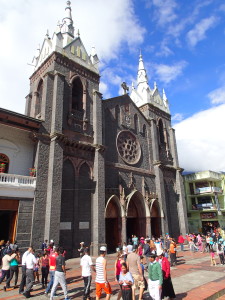
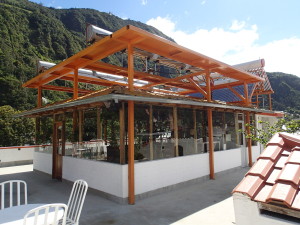
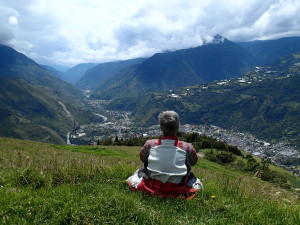
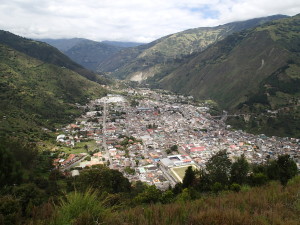
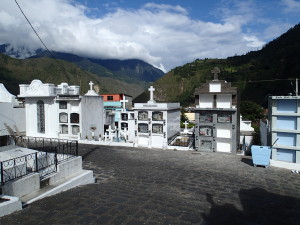
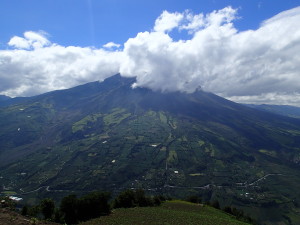
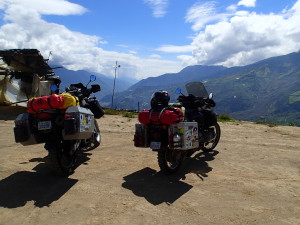
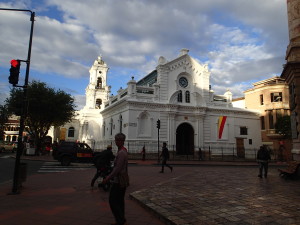
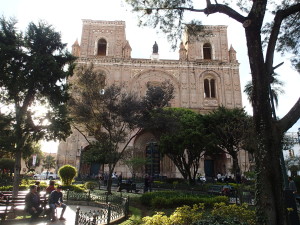
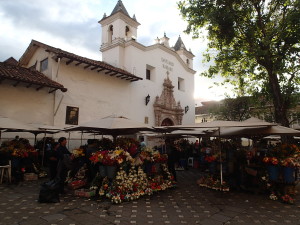
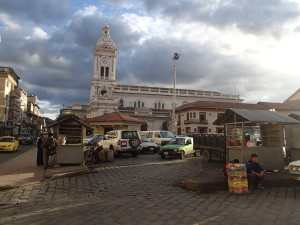
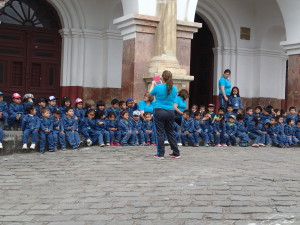
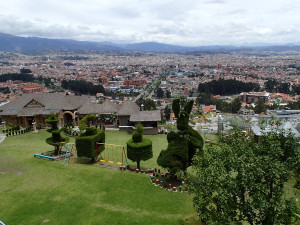
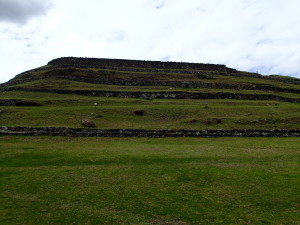
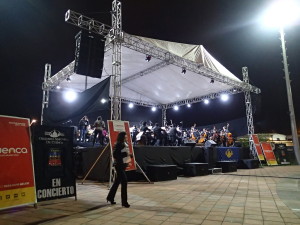
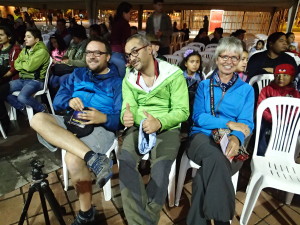
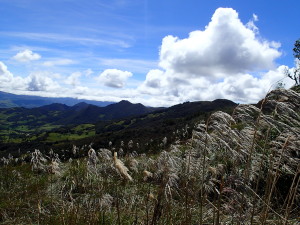
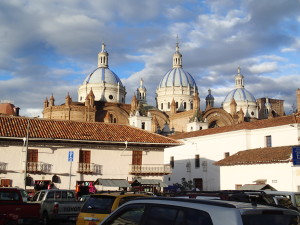
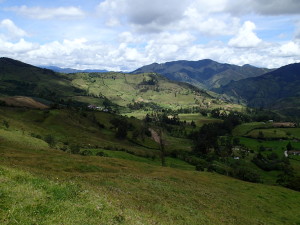
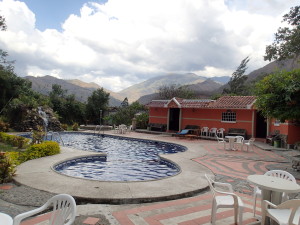
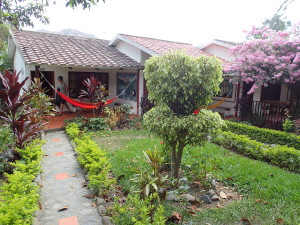
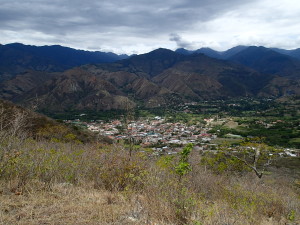
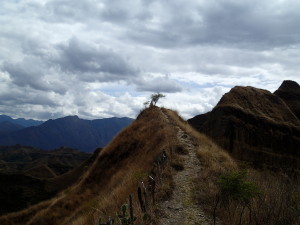
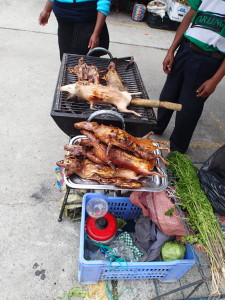
As always great to read your site and to learn more about the places you are seeing .
Got back to the gymn yesterday and one of the women in pump ( not sure her name -she’s Czech ) asked me to forward your site .
Curlie back at squash and loving it .
Safe travels, love Curlie and Jan